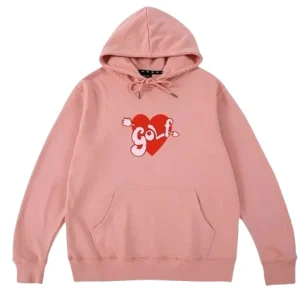
Zdigitizing
Digitization for embroidery is the process of converting artwork into digital stitch files (e.g., DST, PES) that embroidery machines use to create intricate designs on fabrics. As we move into 2025, this field is evolving rapidly, driven by technological advancements, sustainability demands, and creative innovations. Services like ZDigitizing are at the forefront, offering AI-powered tools to deliver optimized stitch files in 2-12 hours for $10-$20 per design. This comprehensive blog explores the top trends in digitization for embroidery in 2025, highlighting their impact on quality, efficiency, and creativity. A concise FAQ section at the end addresses common questions to guide users in leveraging these trends.
Why Stay Ahead of Digitization Trends in 2025?
In 2025, digitization for embroidery is becoming more accessible and innovative, with trends focusing on sustainability, personalization, and technology integration. These developments allow businesses and hobbyists to create high-quality, eco-friendly designs quickly, meeting consumer demands for unique, durable products. Staying updated helps users optimize workflows, reduce costs, and produce standout embroidery for fashion, branding, or gifts.
Top Trends in Digitization for Embroidery in 2025
Based on industry insights, here are the key trends shaping embroidery digitization this year:
1. AI-Powered Automation and Optimization
-
Description: AI is automating complex tasks like stitch mapping, density adjustments, and error detection, making digitization faster and more accurate.
-
Key Features:
-
Auto-digitizing for quick conversions of logos or patterns.
-
AI-driven suggestions for stitch types (e.g., satin, fill) based on fabric (e.g., cotton, twill).
-
Error prevention for issues like puckering or thread breaks.
-
-
Benefits:
-
Reduces time from hours to minutes, with files delivered in 2-12 hours.
-
Enhances accessibility for beginners without technical skills.
-
Improves quality with optimized stitch paths, minimizing waste.
-
-
Applications: Logos for corporate uniforms, custom patterns for fashion apparel, or monograms for gifts.
2. Sustainable and Eco-Friendly Digitization
-
Description: With growing environmental awareness, digitization is focusing on waste reduction and support for sustainable materials like organic cotton or recycled polyester.
-
Key Features:
-
Optimized stitch paths to minimize thread usage.
-
Digital workflows for paperless uploads, previews, and delivery.
-
Compatibility with biodegradable threads and eco-fabrics.
-
-
Benefits:
-
Lowers production costs by reducing material waste.
-
Appeals to eco-conscious consumers in fashion and branding.
-
Enhances brand reputation with green practices.
-
-
Applications: Eco-friendly apparel collections, branded tote bags for promotional events, or sustainable team merchandise.
3. Bold and 3D Textured Designs
-
Description: Trends like 3D puff embroidery and textured designs are gaining traction, with digitization supporting raised, dimensional effects for bold logos or patterns.
-
Key Features:
-
Dense satin stitches with foam for 3D puff on caps or jackets.
-
Layered stitch techniques for textured, abstract expressions.
-
Bold typography with oversized text in unique colors.
-
-
Benefits:
-
Creates eye-catching, premium designs that stand out.
-
Enhances tactile appeal for fashion-forward apparel.
-
Supports creative experimentation with minimal waste.
-
-
Applications: Streetwear hoodies, sports caps with team logos, or promotional jackets.
4. Advanced Personalization and Customization
-
Description: AI and software advancements enable rapid digitizing of personalized designs, such as monograms, handwritten text, or photo-to-embroidery conversions.
-
Key Features:
-
AI for auto-digitizing custom text or images.
-
Real-time previews and revisions for unique designs.
-
Support for specialty techniques like appliqué or sequins.
-
-
Benefits:
-
Meets demand for bespoke products, boosting customer loyalty.
-
Reduces time for custom orders, with files delivered in 2-12 hours.
-
Enhances creativity for small businesses or hobbyists.
-
-
Applications: Personalized T-shirts, monogrammed gifts, or custom team jerseys.
5. Integration with Cloud and IoT Platforms
-
Description: Cloud-based digitizing platforms and IoT integration with smart machines are enabling seamless workflows, from design upload to production.
-
Key Features:
-
Cloud storage for secure design access and collaboration.
-
IoT connectivity for real-time machine adjustments.
-
SSL/TLS encryption for protecting proprietary artwork.
-
-
Benefits:
-
Enhances collaboration for remote teams.
-
Reduces errors with real-time previews and adjustments.
-
Improves efficiency for high-volume production.
-
-
Applications: E-commerce apparel, corporate branding, and promotional merchandise.
Impact of These Trends on the Industry
These trends are revolutionizing embroidery digitization by:
-
Boosting Efficiency: AI and cloud platforms reduce time and costs, with files delivered in 2-12 hours for $10-$20 per design.
-
Enhancing Sustainability: Waste-minimizing practices and eco-materials support green initiatives.
-
Increasing Creativity: 3D textures and personalization expand design possibilities.
-
Improving Accessibility: Beginner-friendly tools and services like ZDigitizing make digitizing available to all.
-
Expanding Applications: From smart textiles to abstract art, trends open new markets for embroidery.
Applications of 2025 Digitizing Trends
These trends support diverse projects:
-
Corporate Branding: AI-optimized logos on uniforms or caps for professional identity.
-
Fashion Collections: Bold, 3D designs on jackets or dresses for runway or retail.
-
Promotional Products: Sustainable, personalized shirts or bags for marketing campaigns.
-
Personalized Gifts: Custom monograms or photo designs on towels for events.
-
Smart Apparel: Digitized conductive threads for wearable tech in fitness or health monitoring.
Challenges and Solutions
While exciting, these trends present challenges:
-
AI Learning Curve: Advanced AI tools may require training.
-
Solution: Use user-friendly services like ZDigitizing with built-in AI, no software needed.
-
-
Sustainability Costs: Eco-materials can be pricier.
-
Solution: Digitization minimizes waste, offsetting costs.
-
-
Cybersecurity Risks: Cloud platforms may expose designs to breaches.
-
Solution: Choose providers with SSL/TLS encryption.
-
How to Leverage These Trends
To make the most of 2025 trends:
-
Outsource to Professionals: Use services like ZDigitizing for AI-optimized files ($10-$20 per design, 2-12 hours).
-
Invest in Software: Choose tools like Hatch ($1,099-$1,499) with AI features for in-house digitizing.
-
Experiment with Designs: Try bold typography or 3D puff for fashion-forward projects.
-
Focus on Sustainability: Use eco-friendly threads and fabrics with optimized digitizing.
-
Adopt Personalization: Offer custom designs to attract clients in e-commerce or gifting.
Conclusion
The top trends in digitization for embroidery in 2025—AI automation, sustainability, bold/3D designs, personalization, cloud integration, abstract styles, smart textiles, and advanced software—promise a future of efficiency, creativity, and eco-friendliness. Services like ZDigitizing make these trends accessible with professional stitch files delivered in 2-12 hours for $10-$20 per design, empowering users to create high-quality embroidery for apparel, branding, or gifts. By embracing these innovations, businesses and hobbyists can stay ahead, producing stunning, sustainable designs that meet modern demands. As technology continues to evolve, digitization will remain a cornerstone of embroidery’s future.
FAQs About Digitizing for Embroidery in 2025
What are the top trends in embroidery digitization for 2025?
AI automation, sustainability, 3D textures, personalization, cloud platforms, bold styles, smart textiles, and advanced software.
How does AI change embroidery digitizing?
AI automates stitch mapping, optimizes density, and detects errors, reducing time and improving accuracy.
Why is sustainability trending in digitizing?
Optimized files and eco-materials reduce waste, aligning with consumer demand for green products.
What are 3D puff designs?
Raised embroidery using foam and dense stitches for bold, dimensional effects on caps or jackets.
How fast can I get digitized files?
Professional services like ZDigitizing deliver files in 2-12 hours, with rush options under 2 hours.
What projects benefit from 2025 trends?
Corporate branding, fashion apparel, promotional products, personalized gifts, and smart textiles.
How do cloud platforms help digitizing?
They enable remote access, collaboration, and secure storage for efficient workflows.
What challenges come with AI digitizing?
Learning curves and compatibility; solved with user-friendly services or software.
Are digitizing trends eco-friendly?
Yes, many focus on waste reduction and sustainable materials.
What’s the future of embroidery digitizing?
AI, AR previews, and IoT integration will enhance speed, creativity, and accessibility.




